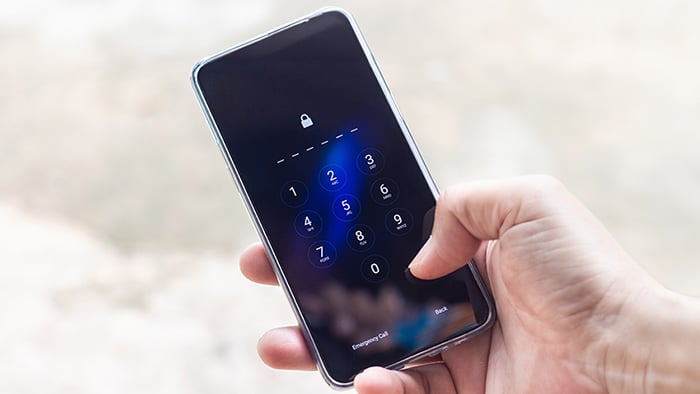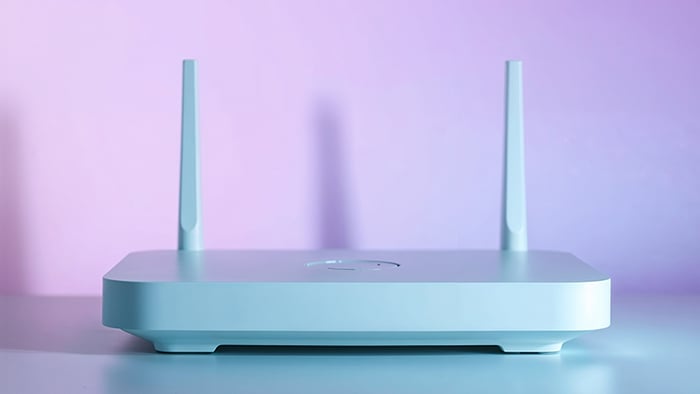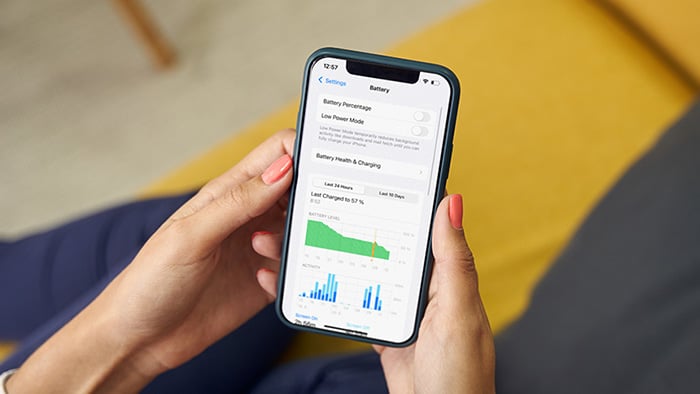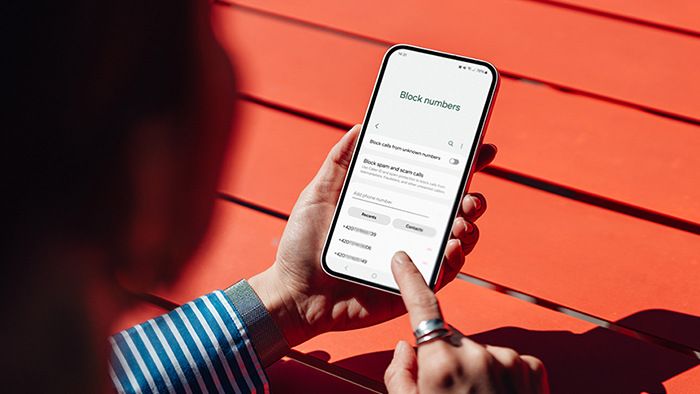How to log into your router with a web browser
The most common way to access your router settings is through a regular web browser. This method works for most routers and doesn’t require any extra tools. First, you connect to your router, then access your router login page and enter your credentials.
1. Connect to your router
First, you’ll need to connect to your router’s network. You can connect using Wi-Fi on a mobile device or computer, or by plugging an Ethernet cable into your PC.
Here’s how to check if you’re connected to a router via Wi-Fi or Ethernet:
-
Wi-Fi: In your taskbar or menu bar, look for the Wi-Fi icon (the curved signal bars).
-
Ethernet: On a Windows device, click the network icon on your taskbar (bottom right) and look for a computer monitor with a cable icon. Although newer Macs don’t have Ethernet ports, you can connect with an adapter.
2. Access your router login page
Open a browser and type in your router’s IP address into the address bar. Many routers use one of the following by default: 192.168.1.1 or 192.168.0.1. Some routers also have a router login URL: a web address that connects to a router’s login page.
Looking for your router’s IP address or login URL? Skip down to this section: How to find your default router IP address and logins.
Your router has two IP addresses — make sure you use the right one:
-
A public (WAN) IP address, assigned by your internet service provider. It connects to the internet.
-
A private (LAN) IP address, assigned to the router itself. It is used for your home network.
To access your router login page, you’ll need the private IP address.
Not sure which is your router and which is your modem? Don’t worry, it’s a common source of confusion. Check out our guide on the difference between modems and routers.
3. Enter your credentials
Once on the router login page, you’ll need to enter your username and password. If you're logging in as an administrator (which most users are), you’ll need to use your router’s admin credentials to access the full settings.
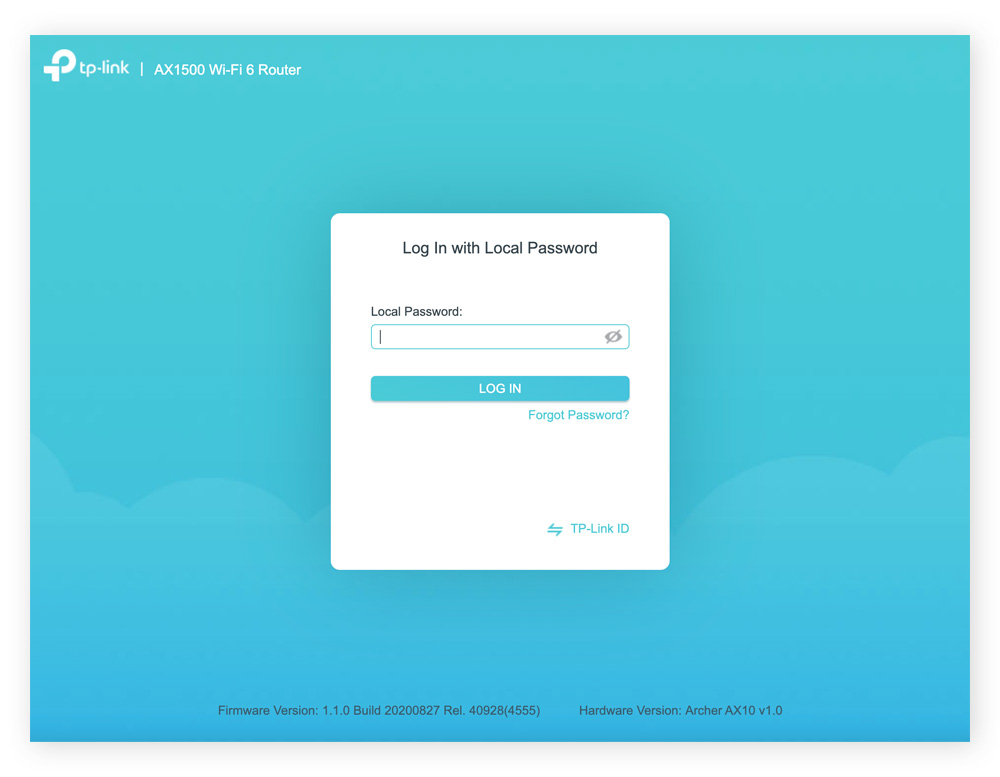
Default usernames and passwords are commonly printed on the back of your router. These can include: admin/admin, admin/password, and admin/1234.
If you changed your credentials and can’t remember them, you may need to perform a factory reset. Hold down the reset button on the back of your router for 15 seconds until the lights blink — this will restore the default credentials.
Once you log into your router’s admin page, you can:
-
Change your Wi-Fi network name.
-
Update your Wi-Fi password.
-
Set up guest networks.
-
Manage connected devices.
-
Apply parental controls or security settings.
-
Turn on automatic software updates.
How to log into your router with a mobile app
Newer routers often come with a companion mobile app. For some routers, this may be the only way to sign in to your router settings. Here’s how to log into your router with a mobile app:
1. Connect your mobile device to your router
Make sure your phone or tablet is connected to your router’s Wi-Fi network, not your mobile data or a guest network. If you’re not on the same network, the app won’t be able to detect your router.
You can connect to your Wi-Fi network via network settings on your mobile device. Here’s how:
-
On iPhone/iPad: Go to Settings > Wi-Fi > select your home network > if prompted, enter the password.
-
On Android: Swipe down to open Quick Settings > tap the Wi-Fi icon > choose your home network > if prompted, enter the password.
2. Launch the app
Launch your router’s app on your mobile device. If you need to download the app, below is a table with some common routers and their companion apps:
| Manufacturer |
Mobile app |
| ASUS |
ASUS Router App |
| D-Link |
mydlink |
| Google Home |
Google Home |
| Linksys |
Linksys |
| NETGEAR |
Nighthawk App |
| TP-Link |
TP-Link Deco |
Not sure which app you need? Check your router’s packaging, the manual, or the manufacturer's website. There may also be a QR code on the back of your router.
3. Enter your credentials
To access router settings in the app, enter your router admin username and password, not the logins you use to connect to Wi-Fi.

If you’re using a router provided by your internet service provider (ISP), use the account credentials they gave you during the setup. If you don’t have an existing account, you’ll most likely need to create one.
Once logged in, you’ll have access to your router’s configuration page.
How to find your default router IP address and logins
Your private router IP address is the key to accessing your router's settings. Some routers also support a custom login URL, which also works as a shortcut to your router’s admin interface.
Below are the default IP addresses and login URLs for some common router brands. Copy the relevant IP address into a browser to enter your credentials and access your router settings. If your router is not listed below, don’t fret. Use our guide to manually find your router IP address.
| Manufacturer |
Default IP address |
| ASUS |
192.168.1.1
192.168.0.1 |
| Cisco |
192.168.1.1 |
| D-Link |
192.168.0.1 |
| Linksys |
192.168.1.1 |
| NETGEAR |
192.168.0.1
192.168.1.1
10.0.0.1 |
| TP-Link |
192.168.0.1
192.168.1.1
192.168.68.1 |
Remember, you’ll need your private IP address, not the public one; read our article on private vs public IP addresses to learn the difference, then keep yourself safe by learning what someone can do with your IP address. If you want to hide your IP address, simply use a VPN, which also encrypts your connection.
Secure your home network with Avast
Updating your router settings is a smart first step toward better home network security. But for better protection, pair it with a cybersecurity app that works in real time.
Avast Free Antivirus scans your home network and connected devices for hidden vulnerabilities and intruders. It also helps protect against online scams and malware, so you can browse more safely on your home network and on the go.
FAQs
Is router login the same as Wi-Fi?
No, your router login credentials are not the same as your Wi-Fi network’s name and password. Your router login is used to access your router settings. Default usernames and passwords are often printed on the back of your router. Some common default logins include: admin/admin, admin/password, and admin/1234.
How can I reset my credentials?
To reset your login credentials, you’ll need to perform a factory reset on your router. On the back of your router, hold down the reset button for 15 seconds, or until the lights blink. Once restored to its original factory settings, log into your router with the default login credentials.
How can I strengthen my router security?
By changing certain router settings, you can help prevent router hacks, router malware, or intrusions. To start, turn on automatic software updates, create a stronger Wi-Fi password, and change your Wi-Fi network name to something non-identifiable. Also, switch to the WPA2 or WPA3 security protocol and change your DNS settings to strengthen privacy and security.







